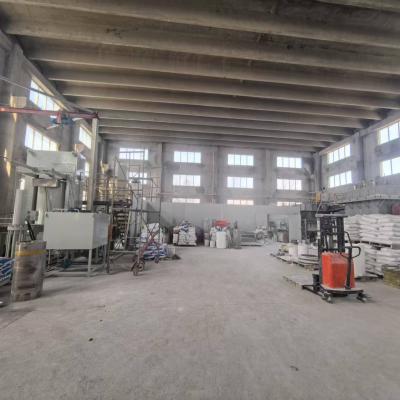
Industrial product demonstrate superior morphological features, rendering them fit for a expansive set of uses. Sprouting from aeronautical and motoring to technology, these products are persistently advancing to comply with the requirements of a modern market.
- Their hardness and fortification to severe thermal states make them paramount for superior components.
- Furthermore, technical ceramics yield merits in terms of strength, enhancing the development of novel technologies.
Engineering Compounds: Created for Unmatched Effectiveness
Produced ceramics stand out in demanding scenarios due to their extraordinary qualities. Crafted from exclusive raw elements and undergoing meticulous processing strategies, these state-of-the-art compounds present unmatched toughness, wear resistance, and endurance to drastic thermal states, decay, and scratching. From flight components to carving tools, industrial ceramics furnish peerless operation across wide-ranging domains. Their multifunctionality allows enduring inimical environments, ensuring endurance and constancy. As refinement progresses, the necessity for high-performance substances grows, cementing the dominant status of industrial ceramics in shaping a more resilient future.
High-Tech Ceramics: Surpassing Matter Limits
Material, highlighting remarkable sturdiness and resilience, are in the midst of a shift. Advanced ceramics, formulated with accurate control over their constitutions and minute arrangement, are pushing the thresholds of that which is doable. These forms present a diverse assortment of traits, rendering them preferable for rigorous domains such as aeronautics, therapeutics, and power. From featherweight parts that bear extreme hotness to compatible with living tissue implants that merge effortlessly with the flesh, advanced ceramics are revolutionizing our sphere.
Meticulous Ceramic Creation: Accomplishing Demanding Criteria
Advanced ceramic fabrication has progressed considerably in recent intervals, granting the formulation of complex and highly useful ceramic components. These components are vital across a extensive range of branches, including aeronautics, medical, and instrument domains. Catering to the strict standards for these functions calls for strict fabrication methods that secure dimensional authenticity, surface texture, and material traits. Innovative ceramic fabrication processes utilize manifold methods, including slip casting, injection molding, and additive manufacturing. These processes grant the production of intricate configurations and accurate details with excellent consistency. Furthermore, advances in material studies have initiated new ceramic recipes endowed with strengthened qualities. These substances display increased durability, longevity, and tolerance to severe heat conditions, making possible their use in rigorous sectors.
The opportunities for accurate ceramic fabrication are immense. As examinations and evolution make headway, we can await even more innovative tactics and forms that will similarly enhance the margins of what is achievable in this domain.
Elite Ceramic Compounds for Severe Settings
Innovative ceramic substances maintain extraordinary strength and tolerance against extreme environments, making them ideal for demanding uses in defense sectors. These high-tech ceramics can resist extreme environmental loads, defy corrosion, and retain their efficiency under high kinetic pressings. Their singular nanostructural specifications empower steady output in inimical locales, including fireplaces, turbines, and nuclear reactors.
- Advanced ceramic alloys
- High-temperature stability
- Lightweight design
Advanced Composites: Merging Durability and Applicability
Alloyed ceramics deliver a strong mix of mechanical resilience and distinct specific capabilities. Through the merging of ceramic grains within a substrate, these blends achieve exceptional skills. This fusion results in heightened tolerance against high thermal conditions, wearing, and chemical degradation, rendering them perfect for rigorous deployments in astronautics, automobiles, and energy sector markets. Furthermore, ceramic composites can be personalized to possess exclusive properties like electrical conductivity or biocompatibility, stretching their utility across diverse sections.
Detailed Administration in State-of-the-Art Ceramics
Achieving intended specifications in leading ceramics consistently requires exact regulation over their grain configuration. Various handling elements, including sintering thermal setting, extent, and atmosphere, alongside the incorporation of dopants or extra phases, significantly change the configuration of aggregations, open volume, and other microstructural peculiarities. Fastidious modification of these criteria allows for the growth of robustness, crack resistance, and thermokinetic conductivity. To illustrate, elevating the sintering heat magnitude can promote grain spread, thus increasing mass concentration and improving mechanical load-bearing capacity. Conversely, handling the firing atmosphere may modify the oxidation degree of the ceramic, thereby influencing its electrical conductivity or magnetic features. Comprehending these relationships between microstructure and properties is vital for forming advanced ceramics with bespoke ability suitable for numerous operations.
Erosion-Resistant Ceramics: Enhancing Durability
In taxing commercial domains, where elements are exposed to constant rubbing and degradation, wares with excellent endurance are decisively vital. Wear-resistant ceramics have appeared as a dominant response, affording unparalleled toughness and quality in varied covers such as workshop, mining, and aerospace. These advanced products possess a unique grain layout that enhances their competence to withstand abrasion. By capitalizing on the intrinsic toughness and density of ceramic assemblies, engineers can design long-lasting modules capable of enduring the most challenging operating settings.
Biocompatible Elements: Applications in Therapeutics
Clinically safe ceramics have revolutionized the biomedical industry, delivering an array of supportive qualities for extensive uses. These ceramics are non-toxic within the anatomy, minimizing antibody responses and promoting regeneration. A prime role for biocompatible ceramics is in bone grafts, where their sturdiness sustains long-lasting security to damaged tissues.
Over and above, they are deployed in dental prosthetics, conveying a durable and aesthetically pleasing solution for oral reconstruction. Ceramics also possess a key role in controlled release technologies, empowering the accurate delivery of medication to specific zones within the body.
- What's more, biocompatible ceramics are progressively being probed for biomaterials development, serving as a platform for wound healing.
- Accordingly, the destiny of biocompatible ceramics in clinical use looks encouraging, with continual explorations expanding their potential.
Intelligent Ceramic Sensors: Enabling Reliable Evaluations
Sophisticated ceramic sensors have arisen as critical parts across a diverse array of arenas. These gadgets make use of the individual ceramic heater characteristics of ceramic materials to deliver highly valid determinations. Their toughness in {demanding|harsh| 